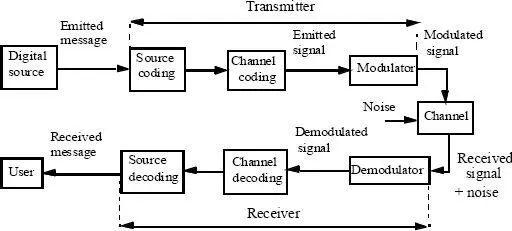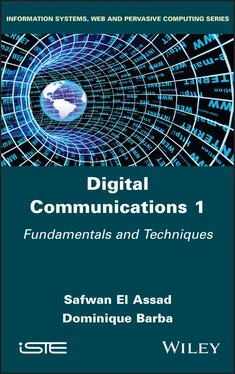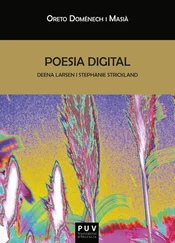1.2. Principle of communication
In a broad sense, the communication is a transfer of information (messages) between a sender and a recipient, through a medium called a channel. There are basically three main functions corresponding to this principle, as shown in Figure 1.4.

Figure 1.4. Principle of communication. For a color version of this figure, see www.iste.co.uk/assad/digital1.zip
A message has been considered as any means of modifying the state or evolution of the addressee. The signal is only an auxiliary supporting the message. It technically makes it possible to transmit this message.
The message has meaning only for the sender and the recipient . On the other hand, for the messenger , the meaning of the messages does not matter. Only the quantitative aspect interests them (to make money for the service means the transmission of a quantity of information). It is this approach that is used to design communication systems.
For communications, a message will be defined as a sequence of elements taken from a finite set of symbols: an alphabet. The transmission of a message consists of making a choice (according to a law that remains to be defined) among all the possible messages. The recipient is supposed to know, a priori , all possible messages. In addition, they must have a decision rule, allowing them to decide which message was sent. A more detailed diagram of a digital communication system makes it possible to highlight the various problems encountered in effectively achieving communication between the sender and the recipient of a message, because the message must satisfy the following conditions:
– the source and the recipient must agree on the symbolic representation used in the information transmitted (definition and use of a message representation code);
– the transmission channel must be transparent to the information, that is to say, it plays only a neutral conveyor role, without changing the information transmitted. This is only possible under certain constraints and by using special processing on the signal transmitted in the channel and on its reception;
– the information to be transmitted must be in a form compatible with the known characteristics of the available channel. This is done by prior coding.
This diagram corresponds to a digital information transmission system. The following elements are distinguished in Figure 1.5.

Figure 1.5. Digital communication system
The role of the different blocks is as follows:
– the source coding makes it possible to adapt a source whose bitrate is too high to the fixed capacity of the transmission channel (to minimize the redundancy of the source). It makes the best use of the channel capacity;
– channel coding helps, firstly, to protect against transmission errors (due to channel imperfections) by introducing a desired redundancy, and, secondly, to make a correspondence between a signal in the channel and one of the symbols of information. It is such that this signal must be compatible with the characteristics of the channel;
– the coding can also be used in the context of encryption (ciphering) of the information;
– modulators and demodulators are used when the message cannot be transmitted in baseband through the medium of transmission (due to propagation difficulties);
– the transmission channel itself transmits the transmitted signal to the receiver;
– the channel decoding restores the coded message (compressed, protected, etc.);
– source decoding reconstructs the original message;
– the information is finally processed by the recipient or stored.
In this system, the transmitted messages undergo various types of degradations :
– noise in the transmission channel disturbing the transmitted signal: noise, crosstalk, jamming, momentary fading, impulsive noise, etc., but also in the transmission and reception electronic devices;
– disturbances and distortions in the source coding for some information compression coding systems (audio, image, video);
– distortions created by the filtering made by the channel. These distortions translate into linear and non-linear distortions (non-constant group velocity). In addition, interferences between successive information symbols belonging to the same source of information or to different sources (in the case of time multiplexing) are developed and must be fought in a specific way.
All this leads to a very important role played by the signal processing at different levels of the communication system , especially at the receiver which regenerates the transmitted signal, before degradation in the transmission channel.
Optimizing the performance of communication systems has led to a diversification of methods and techniques used:
– a better adaptation of the signal emitted by an equalization pre-processing, associated with post-processing in the receiver, enables us to obtain a better robustness against noise of all kinds which is much greater than a single postprocessing;
– the use of detector codes and/or error corrector codes permits us to transmit information in a very disturbed channel almost surely;
– the compression of information, by reducing the bitrate, makes it possible to increase the number of messages transmitted on the same transmission channel, sometimes at the cost of damage to the original message, but which can be controlled in such a way that the disturbances caused are insignificant (images, audio, etc.) and not perceived when they are used.
1.3. Trend towards digital communications
Previously, transmission systems used analog representation and transmission techniques almost exclusively. A fairly clear evolution has emerged since the 1970s for the introduction and use of digital techniques in representation and transmission, regardless of the nature of the information at the origin: digital (data) or analog (phone, images, and videos). In the latter case, this supposes the use of a process of digitization (sampling and quantization) of the signal.
This use of digital techniques in transmission is motivated by the following four reasons:
– degradations do not accumulate in digital transmissions (in the distortion sense);
– the possibility of regeneration upon reception of the transmitted signals with a probability of error such that the quality of transmission remains good;
– the cost of end equipment is lower mainly because of the integration of digital systems;
– monitoring the quality of the transmission and its control are easier.
This digitization was first applied to cable transmission systems and then to radio transmission systems: radio-relay systems and satellite telecommunications. The current trend is in the design and use of fully digital transmission systems (integrated transmission and switching) and the integration of services in the sense where in the same system, and therefore on the same transmission medium, a whole set of different services coexist.
However, a digital transmission a priori requires a larger bandwidth than an analog transmission if one use methods of compression and representation to no more than two levels (M-ary representation, with M> 2).
Indeed, an analog telephone channel conventionally occupies a bandwidth of 3.1 KHz, the same channel in digital form requires a bitrate of 64 kbit/s, so in binary transmission, a bandwidth of about 64 × 0.8 ≅ 51 KHz (according to the extended Nyquist criterion), that is, about 16 times more than analog transmission.
Читать дальше














